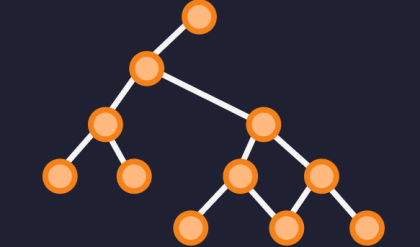Java is a set of computer software and specifications developed by Sun Microsystems, which was later acquired by the Oracle Corporation, that provides a system for developing application software and deploying it in a cross-platform computing environment. Java is used in a wide variety of computing platforms from embedded devices and mobile phones to enterprise servers and supercomputers. Java applets, which are less common than standalone Java applications, run in secure, sandboxed environments to provide many features of native applications and can be embedded in HTML pages.

Writing in the Java programming language is the primary way to produce code that will be deployed as byte code in a Java virtual machine (JVM); byte code compilers are also available for other languages, including Ada, JavaScript, Python, and Ruby. In addition, several languages have been designed to run natively on the JVM, including Scala, Clojure and Apache Groovy. Java syntax borrows heavily from C and C++, but object-oriented features are modeled after Smalltalk and Objective-C.[10] Java eschews certain low-level constructs such as pointers and has a very simple memory model where every object is allocated on the heap and all variables of object types are references. Memory management is handled through integrated automatic garbage collection performed by the JVM.
On November 13, 2006, Sun Microsystems made the bulk of its implementation of Java available under the GNU General Public License (GPL).
The latest version is Java 9, the second of the two supported (with e.g. security updates) versions as of 2017. Oracle (and others) has announced that using older versions (other than Java 8) of their JVM implementation presents serious risks, due to unresolved security issues.
Java is −
· Object Oriented − In Java, everything is an Object. Java can be easily extended since it is based on the Object model.
· Platform Independent − Unlike many other programming languages including C and C++, when Java is compiled, it is not compiled into platform specific machine, rather into platform independent byte code. This byte code is distributed over the web and interpreted by the Virtual Machine (JVM) on whichever platform it is being run on.
· Simple − Java is designed to be easy to learn. If you understand the basic concept of OOP Java, it would be easy to master.
· Secure − With Java’s secure feature it enables to develop virus-free, tamper-free systems. Authentication techniques are based on public-key encryption.
· Architecture-neutral − Java compiler generates an architecture-neutral object file format, which makes the compiled code executable on many processors, with the presence of Java runtime system.
· Portable − Being architecture-neutral and having no implementation dependent aspects of the specification makes Java portable. Compiler in Java is written in ANSI C with a clean portability boundary, which is a POSIX subset.
· Robust − Java makes an effort to eliminate error prone situations by emphasizing mainly on compile time error checking and runtime checking.
· Multithreaded − With Java’s multithreaded feature it is possible to write programs that can perform many tasks simultaneously. This design feature allows the developers to construct interactive applications that can run smoothly.
· Interpreted − Java byte code is translated on the fly to native machine instructions and is not stored anywhere. The development process is more rapid and analytical since the linking is an incremental and light-weight process.
· High Performance − With the use of Just-In-Time compilers, Java enables high performance.
· Distributed − Java is designed for the distributed environment of the internet.
· Dynamic − Java is considered to be more dynamic than C or C++ since it is designed to adapt to an evolving environment. Java programs can carry extensive amount of run-time information that can be used to verify and resolve accesses to objects on run-time.
History of Java
James Gosling initiated Java language project in June 1991 for use in one of his many set-top box projects. The language, initially called ‘Oak’ after an oak tree that stood outside Gosling’s office, also went by the name ‘Green’ and ended up later being renamed as Java, from a list of random words.
Sun released the first public implementation as Java 1.0 in 1995. It promised Write Once, Run Anywhere (WORA), providing no-cost run-times on popular platforms.
On 13 November, 2006, Sun released much of Java as free and open source software under the terms of the GNU General Public License (GPL).
On 8 May, 2007, Sun finished the process, making all of Java’s core code free and open-source, aside from a small portion of code to which Sun did not hold the copyright.
Tools You Will Need
For performing the examples discussed in this tutorial, you will need a Pentium 200-MHz computer with a minimum of 64 MB of RAM (128 MB of RAM recommended).
You will also need the following softwares −
- Linux 7.1 or Windows xp/7/8 operating system
- Java JDK 8
- Microsoft Notepad or any other text editor
This tutorial will provide the necessary skills to create GUI, networking, and web applications using Java.
Try It Option
We have provided you with an option to compile and execute available code online. Just click the Try it button avaiable at the top-right corner of the code window to compile and execute the available code. There are certain examples which cannot be executed online, so we have skipped those examples.
public class MyFirstJavaProgram {
public static void main(String []args) {
System.out.println(“Hello World”);
}
}
There may be a case that you do not see the result of the compiled/executed code. In such case, you can re-try to compile and execute the code using execute button available in the compilation pop-up window.
What is Next?
The next chapter will guide you to how you can obtain Java and its documentation. Finally, it instructs you on how to install Java and prepare an environment to develop Java applications.






Comments are closed.